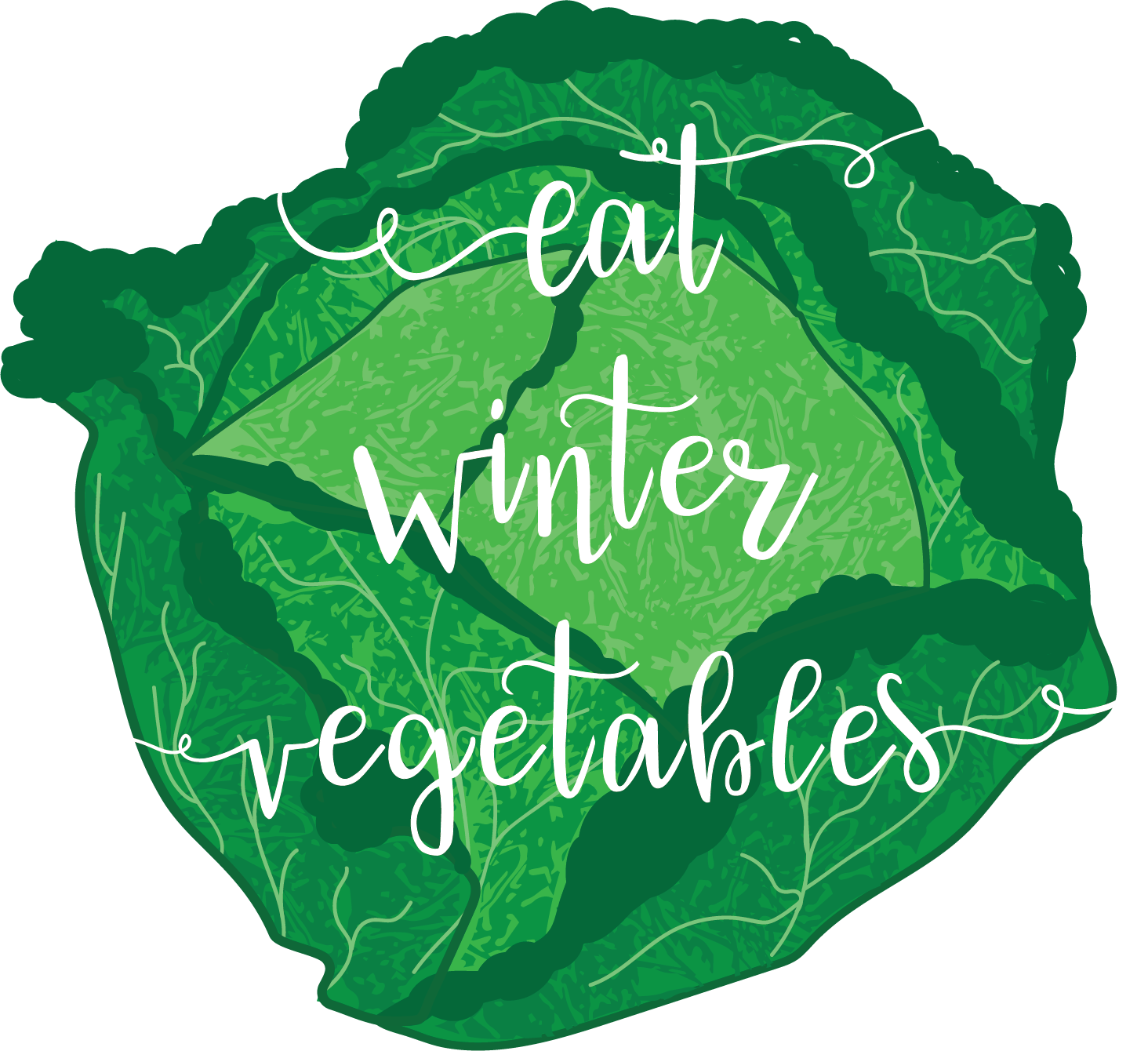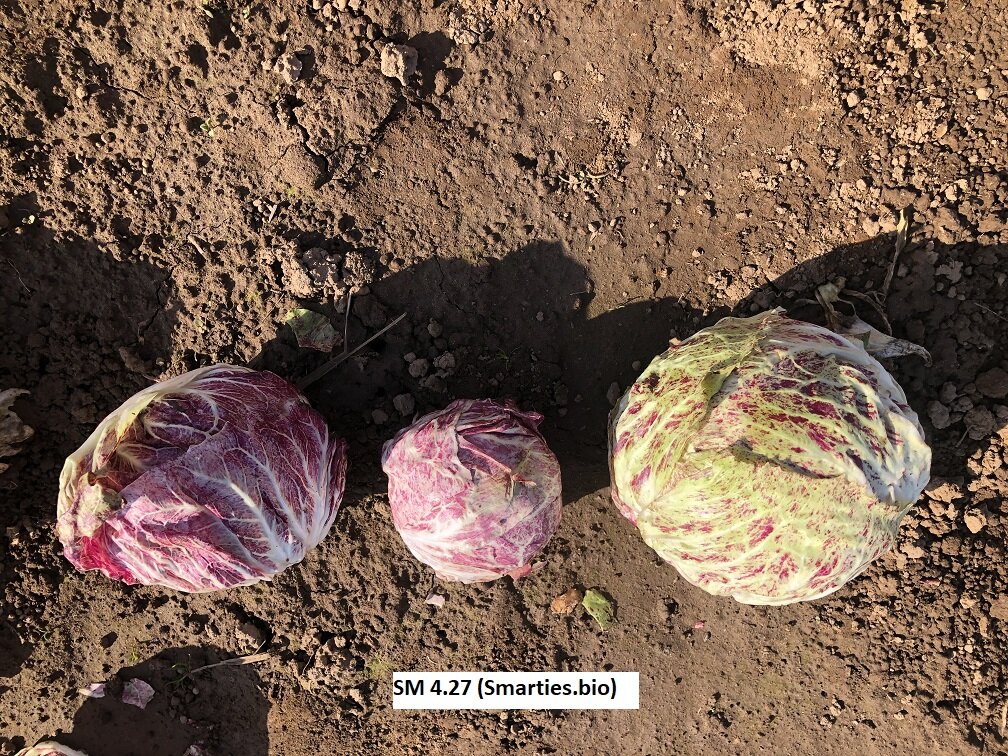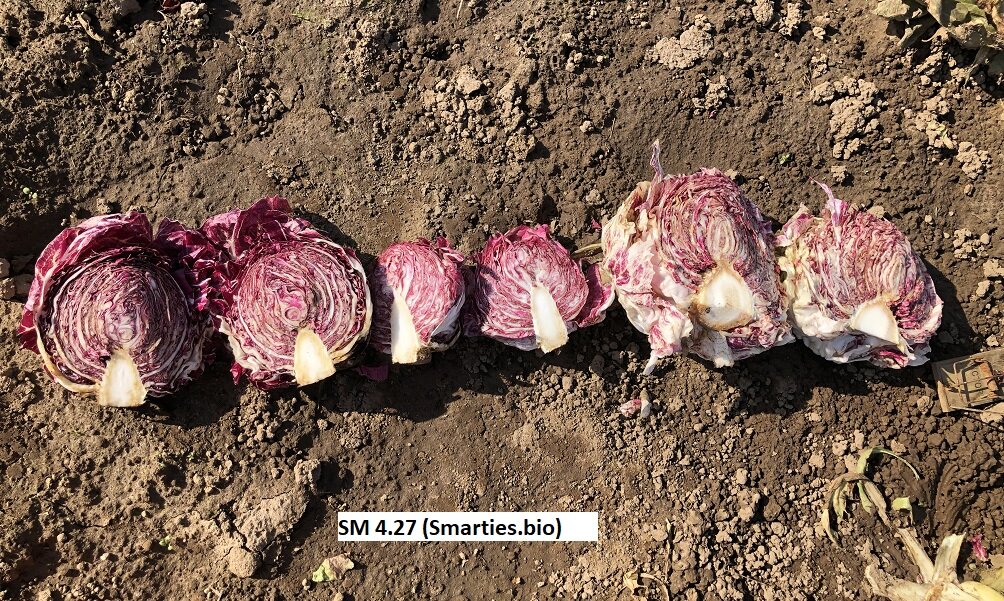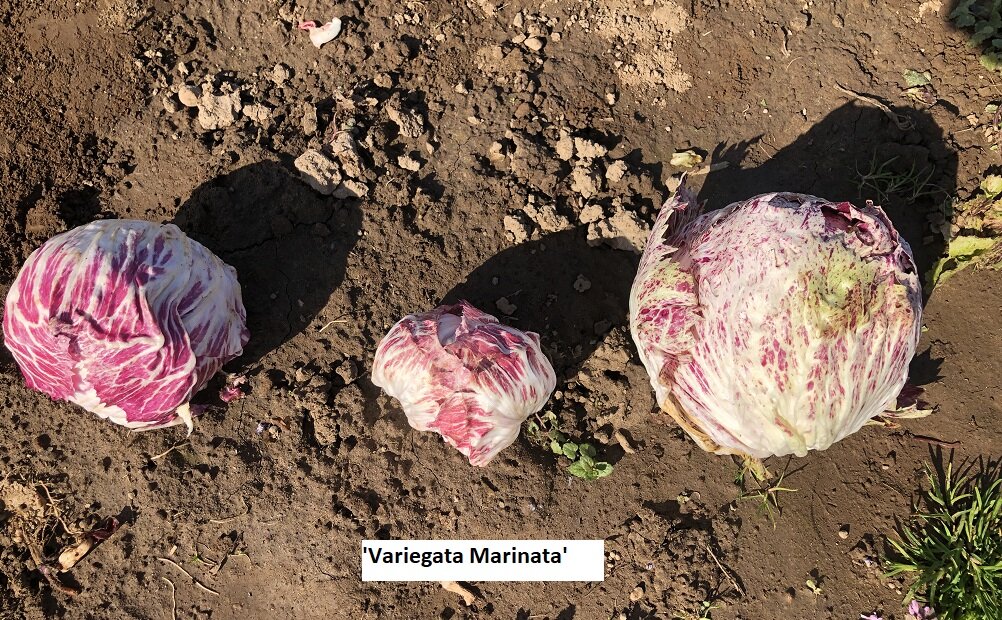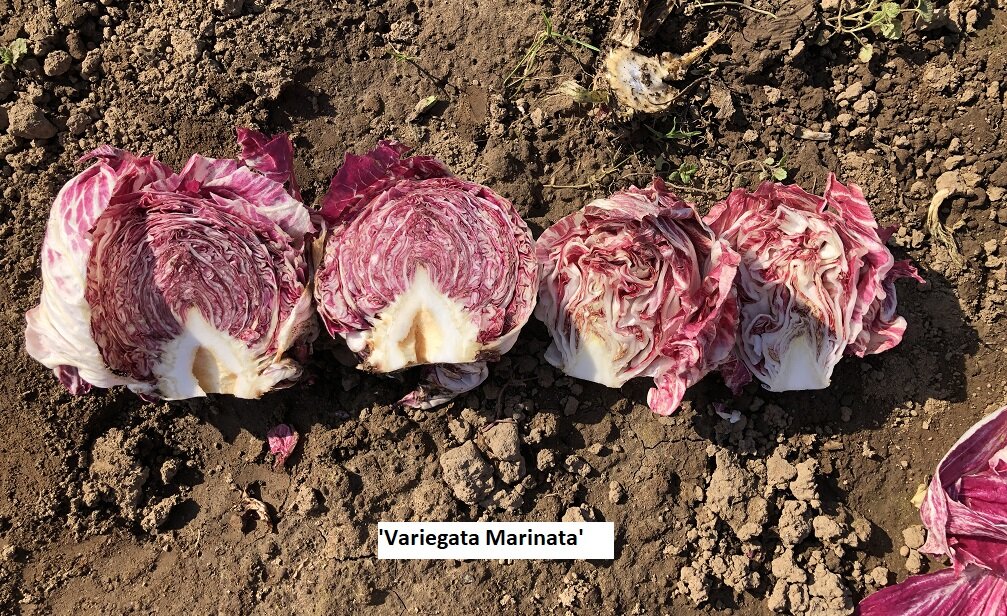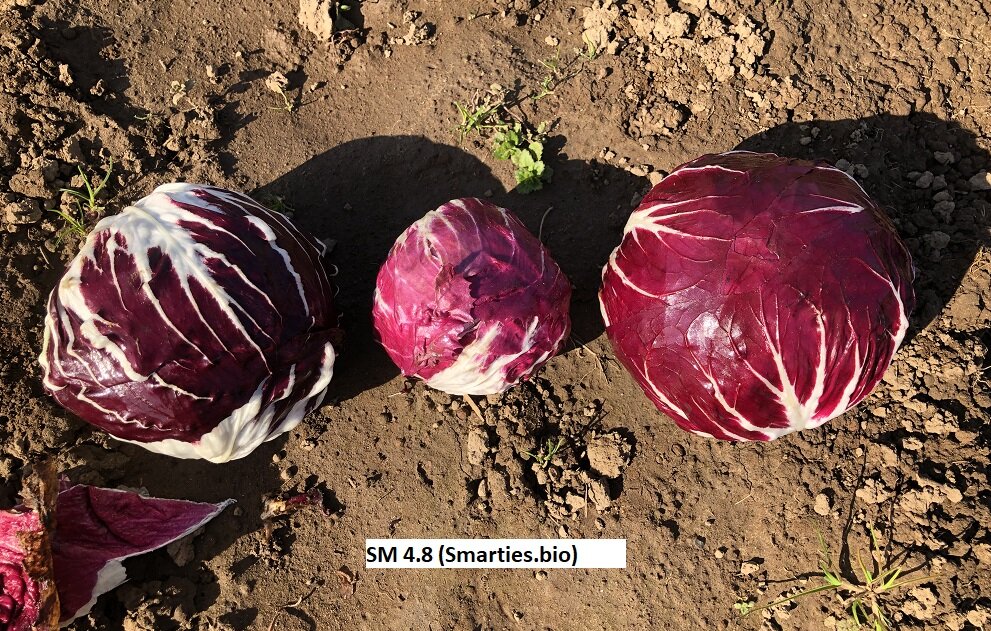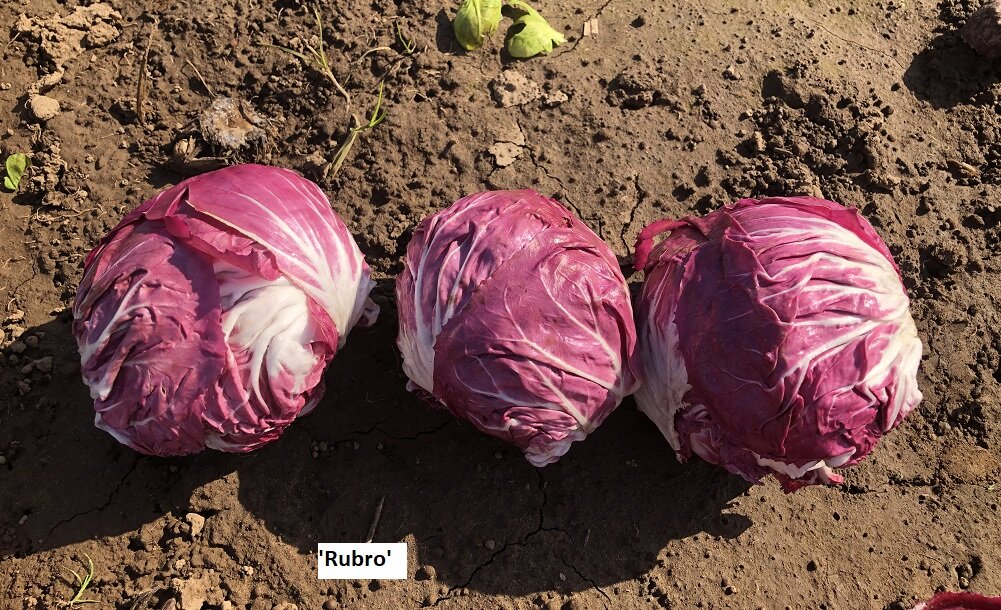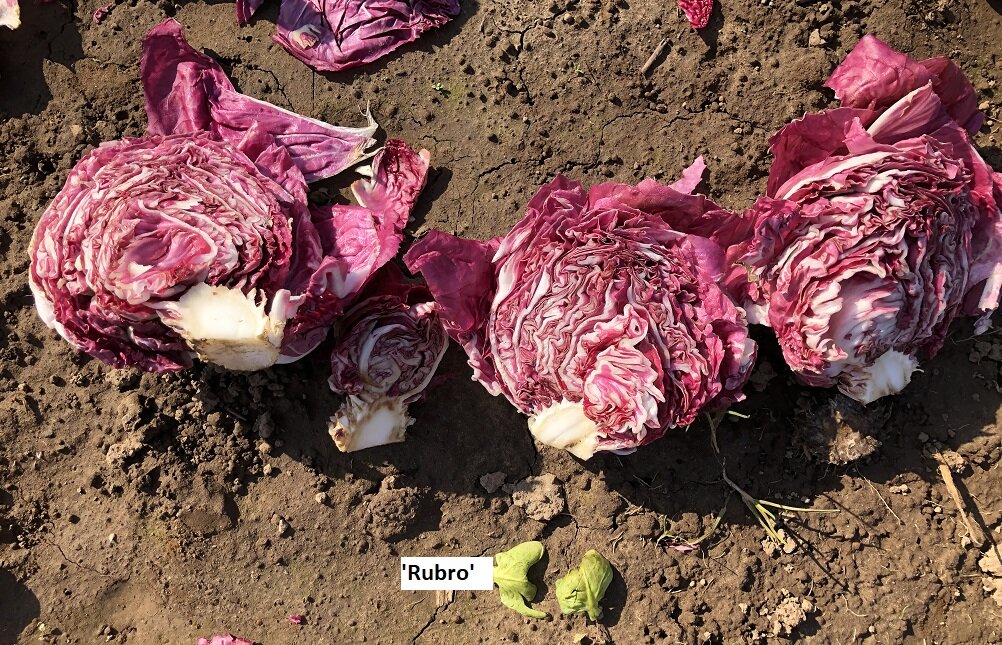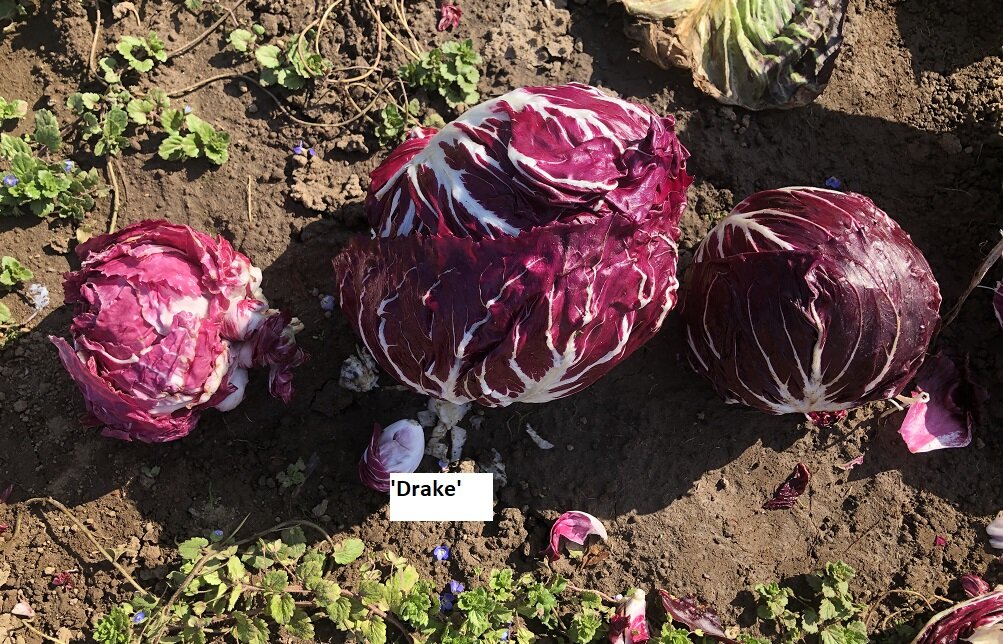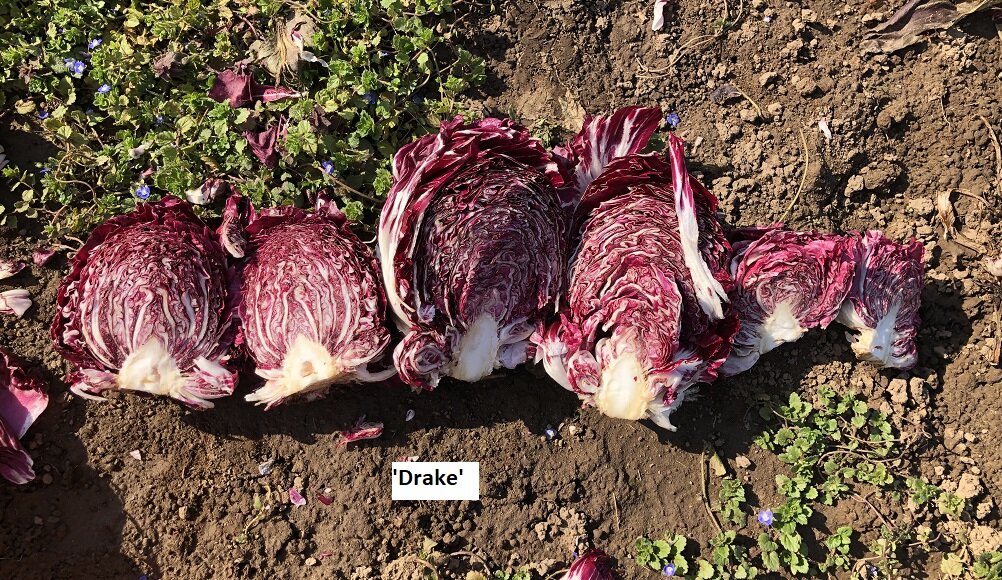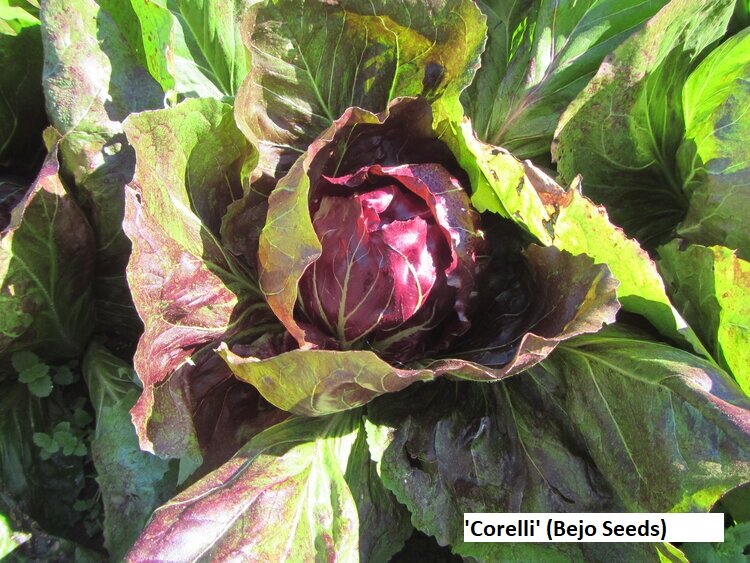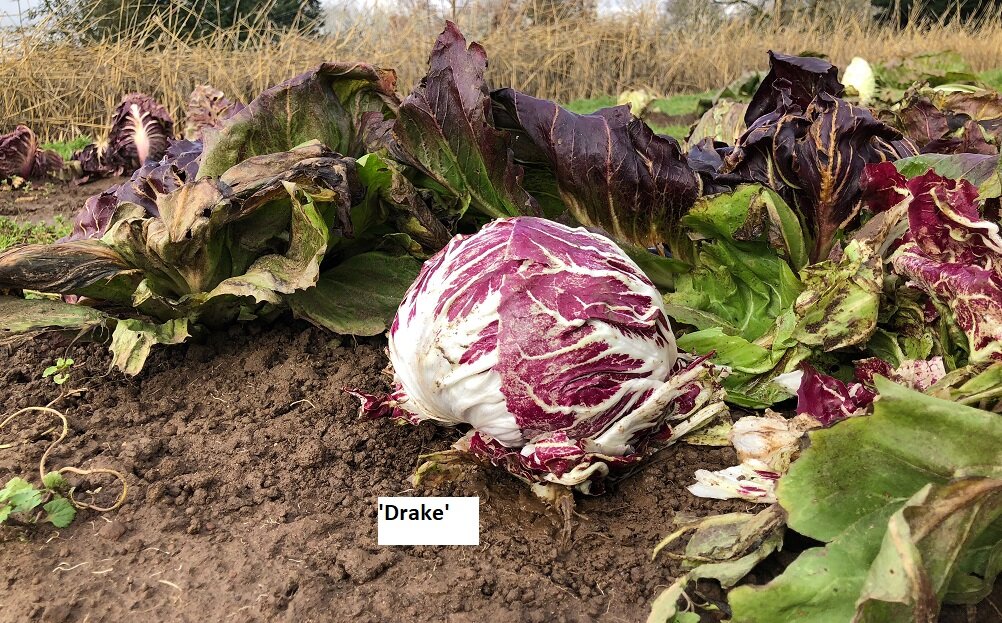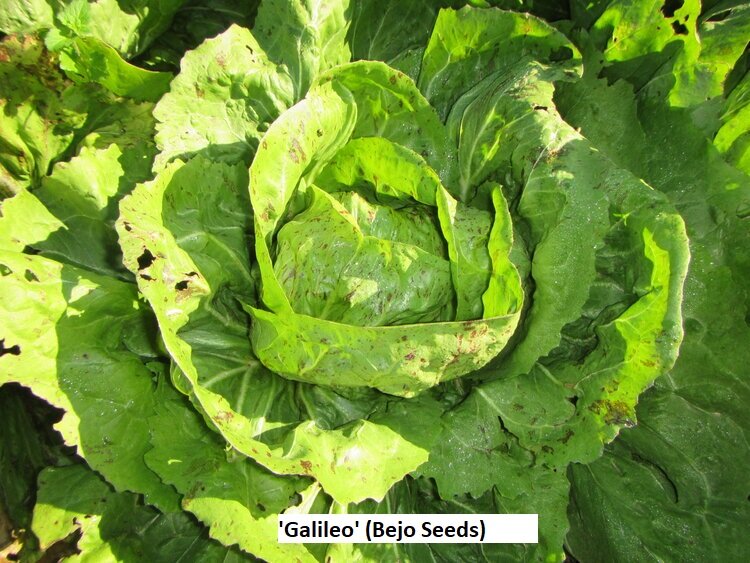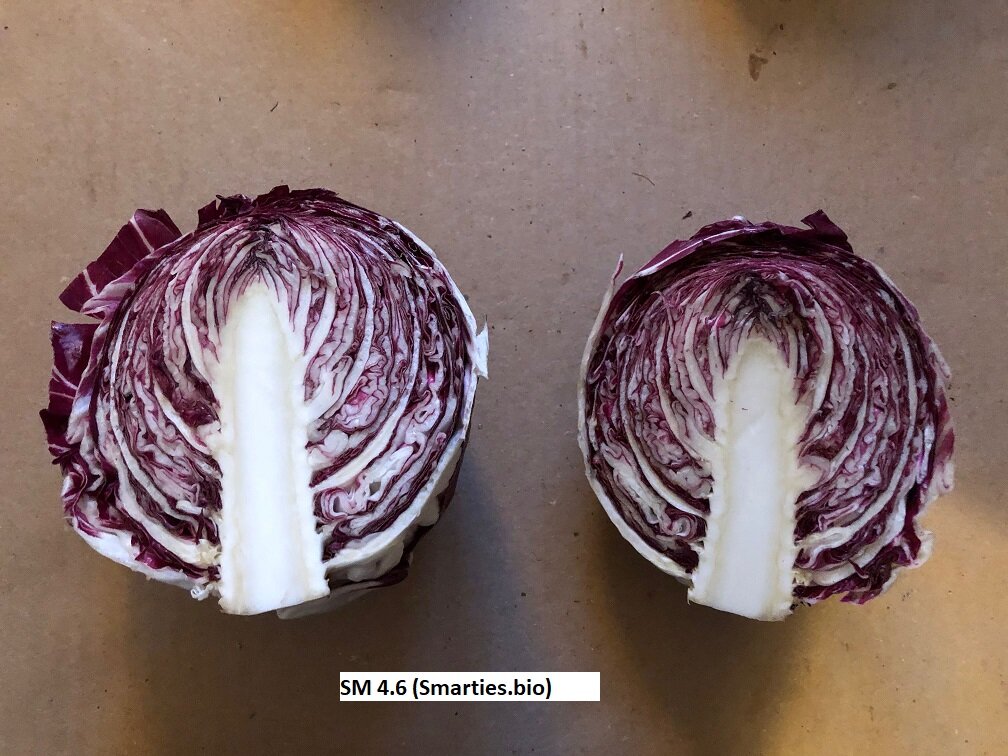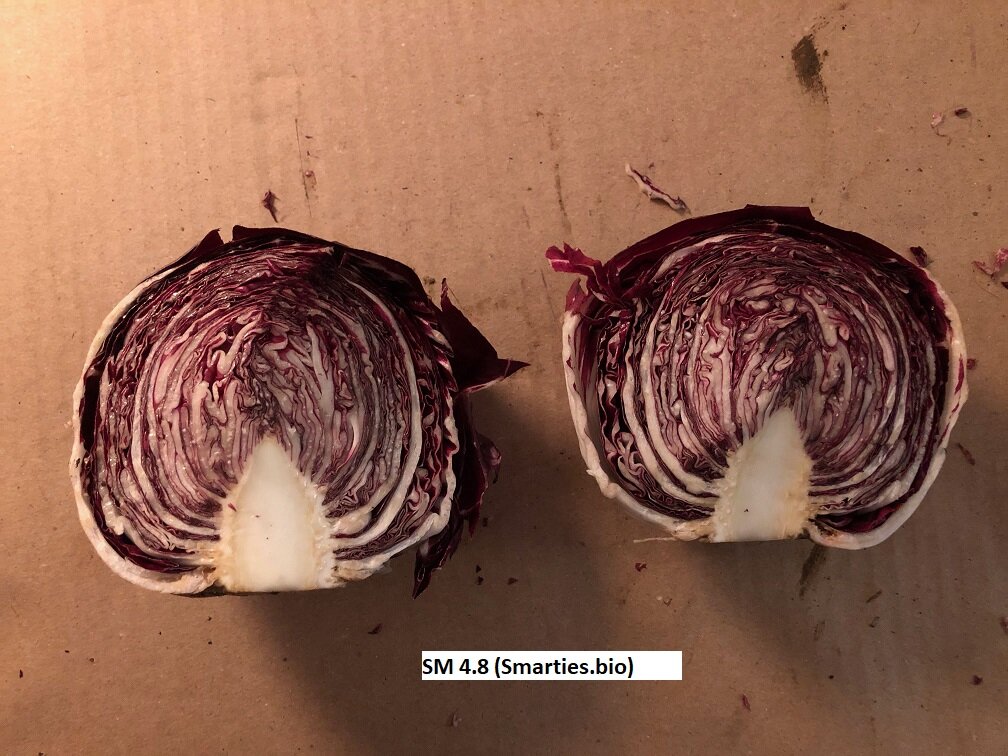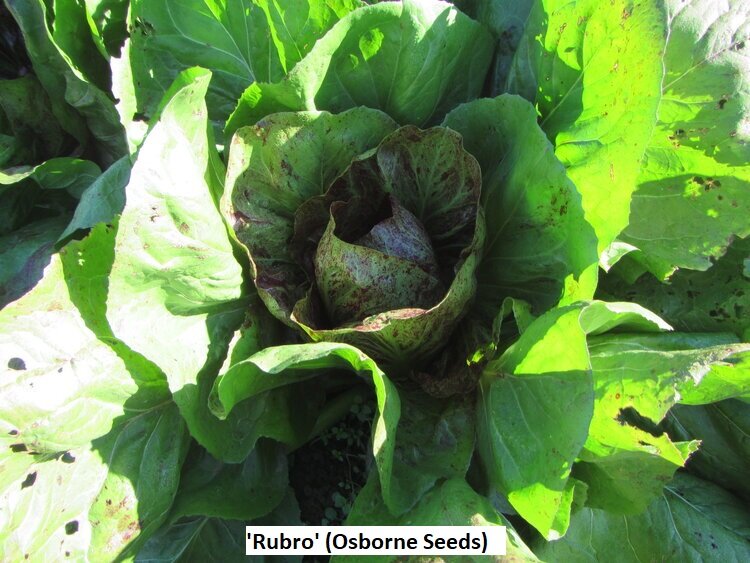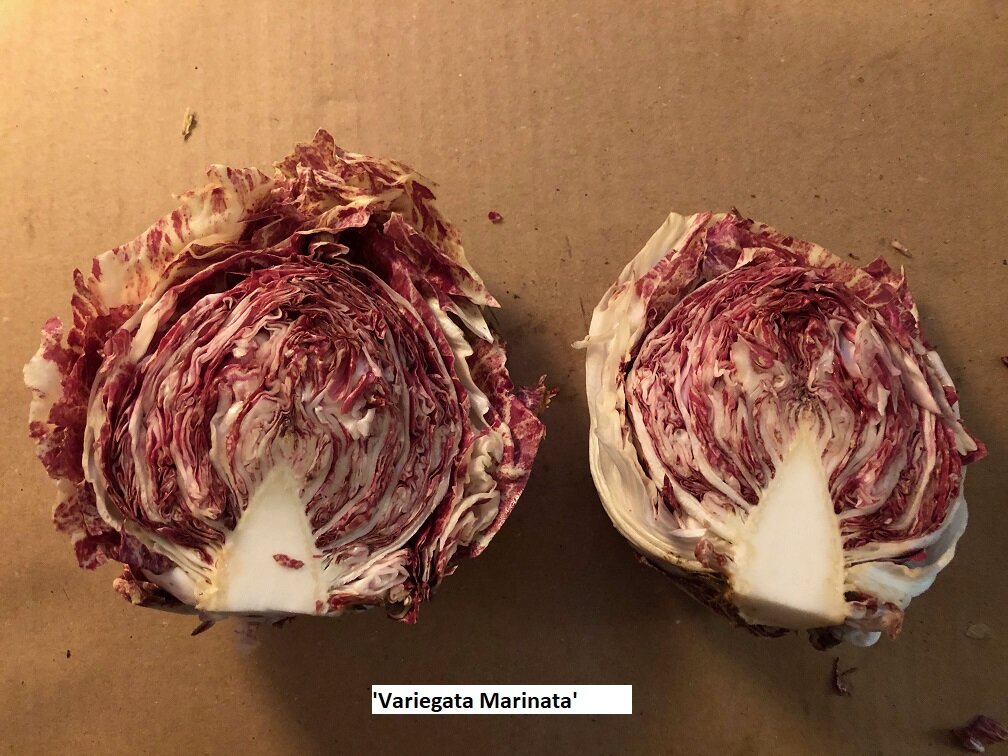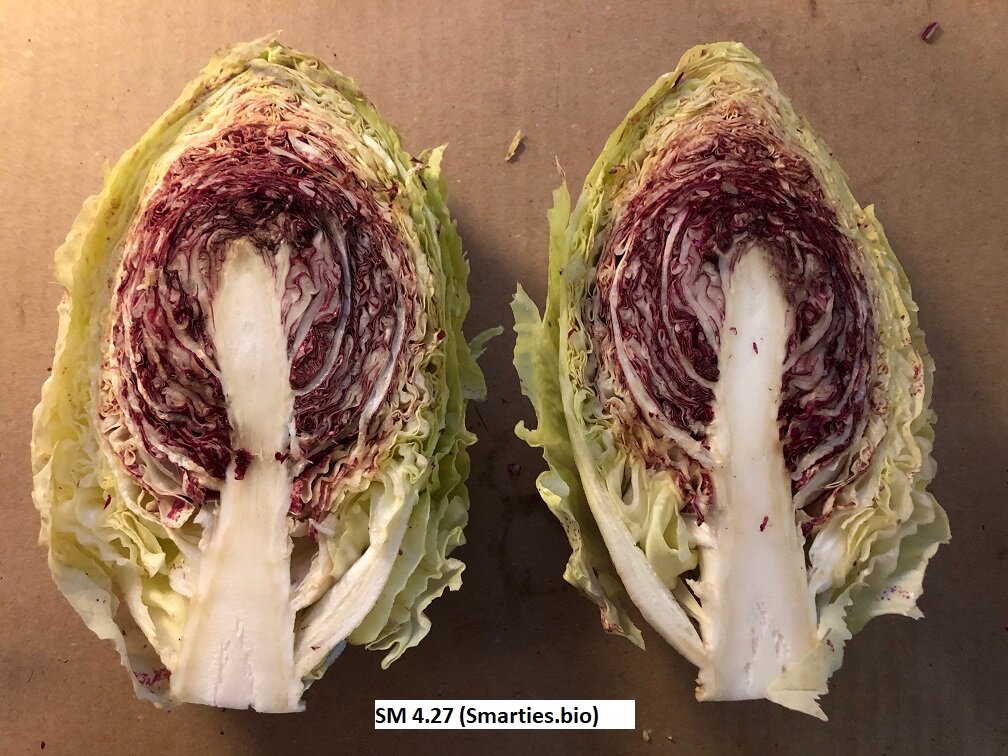Rosso di Chioggia Radicchio
Rosso di Chioggia radicchio, often (mistakenly) referred to as simply Radicchio, or Palla Rossa (red ball), are the most commonly known and widely grown type of radicchio in the world. Arriving on the scene relatively recently, these are the type of radicchio you are most likely to find on the shelves of your local grocery store.
Chioggia radicchio are dense, red balls with a relatively thin crunchy leaf that is streaked with white veins. Unlike its red cousins from Treviso and Verona, the ribs and veins on Chioggia are more integrated into the leaf, essentially having the same taste and texture. Often mistaken for cabbage, Chioggia radicchio are anything but. Crunchy, bitter, piquant, and beautiful, Chioggia radicchio are wonderful eaten grilled as well as chopped raw into a salad. Chioggia radicchio are less bitter than Rosso di Verona, but more bitter than Treviso or any of the Green/Yellow varieties.
When to Find: December - March
Varieties: Corelli, Galileo, SM 4.6, SM 4.27, Variegata Marinata, SM 4.8, Rubro, Drake
Chef Tim Wastell’s Tasting Notes:
"In raw applications such as leafy salads, radicchio di Chioggia’s assertive and bitingly bitter flavor was delicious and effective in standing up to and cutting through rich components like anchovies and roasted garlic, as well as balancing sweet ingredients such as roasted winter squash, sliced pink apples or dried persimmons. To tone down the plant’s natural bite before use, I would shredded leaves in ice water for 30-45 minutes to leach out some of its bitterness".”
“When properly cared for, cooked radicchio di Chioggia transforms into something completely magical. High direct heat - especially over wood embers or in an oven on the highest setting - does wonders to alleviate the brash bitterness and replace it with smoky, meaty, and sweet flavors. A knife and fork worthy canvas for the simple addition of good salt, oil and a splash of vinegar or lemon, or as a beautiful addition to pizza or focaccia.”
“Versatile. Radicchio di Chioggia can be a visually beautiful, wonderfully bitter centerpiece or a supporting cast member in both raw and cooked applications, offering balance when raw and deeply savory and sweet characteristics when cooked.”
